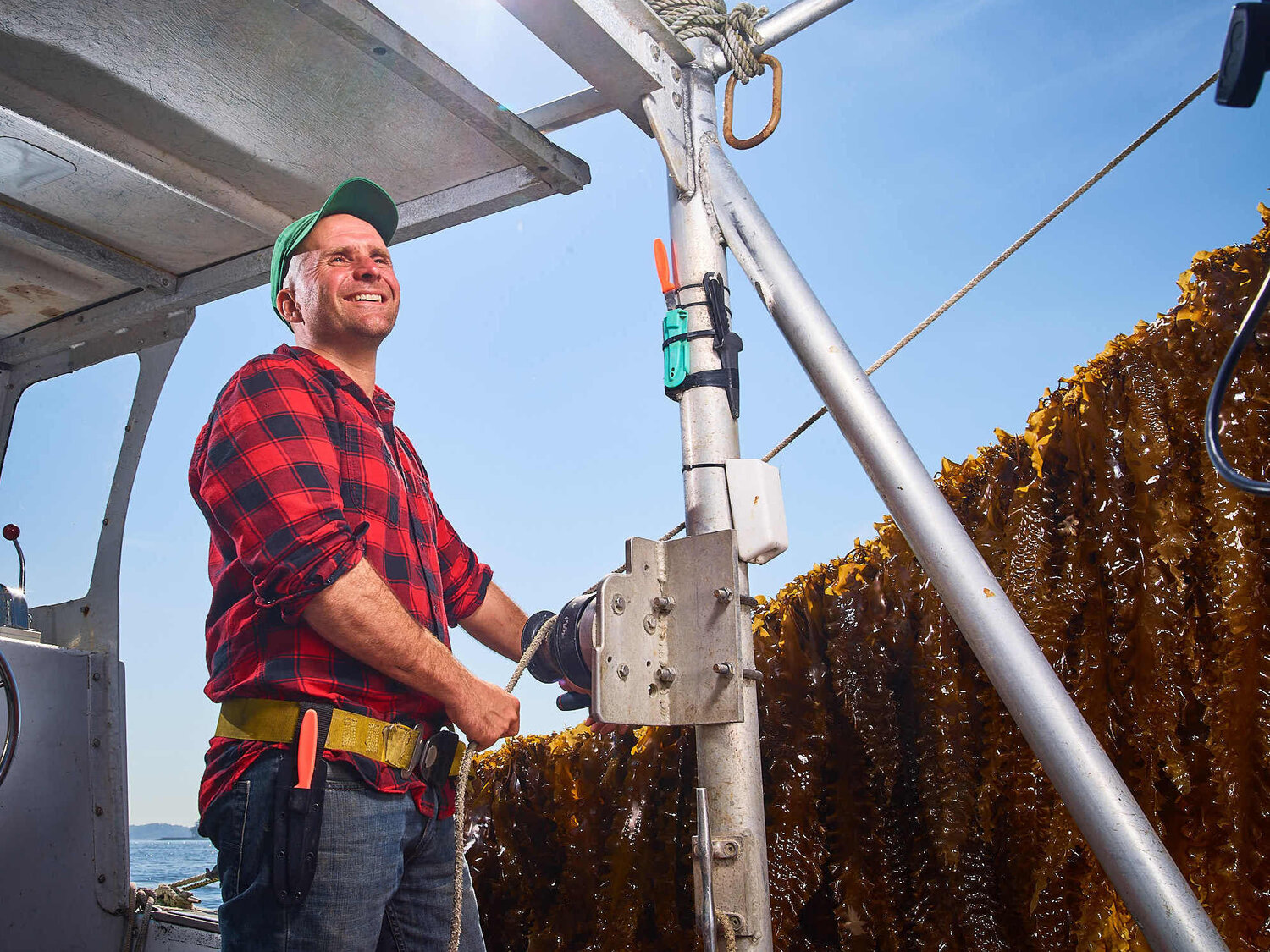
Bren Smith is a seaweed farmer and co-founder of GreenWave, a nonprofit that supports and trains ocean farmers. Photo: GreenWave
Seaweed farming has become a rapidly growing business on both the Atlantic and Pacific coasts of the United States. Fishermen have turned to seaweed farming to help supplement their income in the offseason and the nutrient dense nature of the plant has inspired some to label it the “new kale” giving it buzz in foodie circles. However, while seaweed cultivation has grown, the infrastructure and markets to sell it to buyers have largely failed to keep up and have kept farmers scrambling to offload their crops.
Wrench in the Gears: Anoushka Concepcion, assistant extension educator with the Connecticut Sea Grant, told NPR that the seafood business usually works like this: Oysters and clams are sold right off a boat to a dealer, who sells them to restaurants. Dealers are not buying seaweed yet, because there’s no established market on their end. Additionally, seaweed must be blanched within a half-hour of being pulled from the sea to stabilize it and few farmers have facilities big enough to process large quantities of kelp.
Understanding the Market: For the fledgling, but potentially robust, seaweed farming industry in Alaska understanding if buyers will buy dried or frozen seaweed can help clarify what the end market looks like so that farmers can invest the proper resources into their seaweed crop.
- While seaweed is incredibly nutritious, outside of Asian cuisine, people might not be accustomed to eating it due to its strong flavor. Part of growing the seaweed market will entail working with chefs and commercial food operations to make seaweed a more significant component of the American diet.
Why This Matters: Seaweed aquaculture is the fastest-growing component of global food production and can sequester CO2 in the oceans, be used as an eco-friendly fertilizer as well as provide a feedstock for biofuels. Not just that, but it can provide jobs in coastal areas especially as fish species migrate northward as a result of climate change and therefore cannot be fished in their historic regions. Supporting a sustainable seaweed industry can not only help feed us but also improve the condition of our oceans. So do your part and give seaweed a try next time you see it on the menu or at the store!
June 11, 2019 » Connecticut, farming, Maine, seaweed


